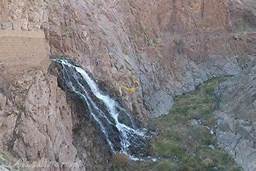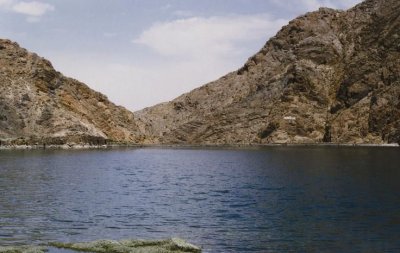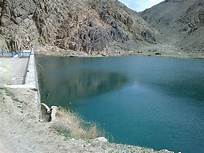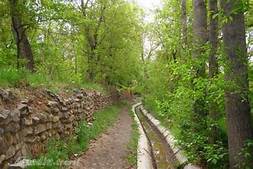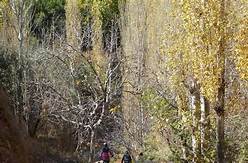7Ghohroud Dam or Abbasi Dam
Ghohroud Dam or Abbasi Dam
To control the dam’s water pressure, Iranian dam builders built towers with stone and mortar from the bottom of the river to the upper end, which at certain distances from the height of the tower with horizontal holes connected to the dam’s reservoir, and inside the tower with stairs. The snail-shaped snails could be easily reached to the bottom of the river, and the straps could open and close the holes from inside the dam as needed. However, in the Qamsar Dam, the difference and privilege is that instead of one tower, which was common to all the old dams in Iran, two towers were built at a distance from each other, and this is the biggest architectural secret of this dam, which has been built for centuries. Iran has been used and exploited for a long time and more than other old dams.
The dam is built twelve kilometers southeast of Qahroud village in the middle of a deep valley that separates the two mountain ranges a short distance from each other with stone and mortar. Its wall is 36 yards long and 20 yards wide from the bottom of the valley. The plan and construction of this dam is also the remains of Qamsar Dam. The front wall and its catchment are built vertically, but the wall behind the dam has a steep slope. In the middle of the wall, wells have been made in the form of two pipes inside each other, and around the inner pipe with a string of stairs, it is connected to the bottom of the dam with a tunnel where a dam and a water dam have been built. They are installed inside the tunnel to prevent architectural secret .
In his travelogue, Lord Curzon of England, who observed the Qohroud Dam in the early 20th century, considers it to be the most important and interesting civil work in Iran and says:
Of the settlements of Abadi and the actions of the recent sultans of Iran, only the Qohroud Dam (Kuh-e Rud) remains, which was carried out by the order of Shah Abbas Kabir and is still in use. Nothing significant can be found across Iran anymore.
Then, the Safavid Shah built a new garden at the outlet of this dam, which is on the outskirts of Kashan, with new buildings, which is why it was called Safi Abad. In the middle of the last century, there were gradual damages in the dam, which were repaired and restored during the reign of Mohammad Shah Qajar by Bahman Mirza Baha’u'llah, the ruler of Kashan at that time.
But the current situation is chaotic: the building is safe and sound. The volume of the main catchment tank is estimated at 460,000 cubic meters, part of which is filled with mud, silt and sand.
Ghahroud village is located 40 km from Kashan and in the middle of the high mountains of Karkas in Khosh-e-Ab-e-Ab weather areas. The village is bordered on the north by the city of Qamsar, on the southwest by Kamo and Rachqadeh, on the east by the village of Abyaneh, and on the northwest by the village of Qazaan. Ghahroud has very cold winters and cool summers or pleasant weather. This beautiful village, in addition to having pristine natural attractions and valuable cargo due to its location on the north-south route of the country and warm-hearted and hospitable people, has always been considered by tourists and foreign envoys and has described Qaohroud in its travelogues.
فرم در حال بارگذاری ...
